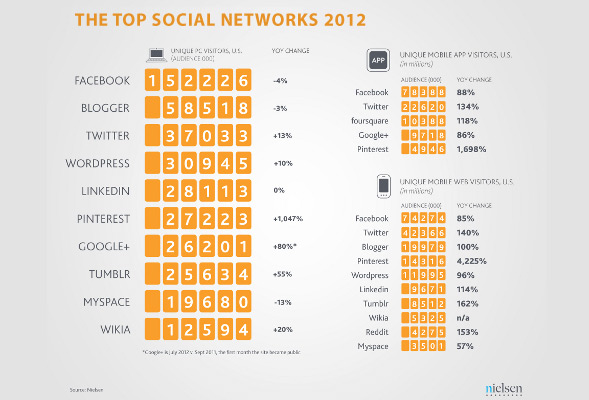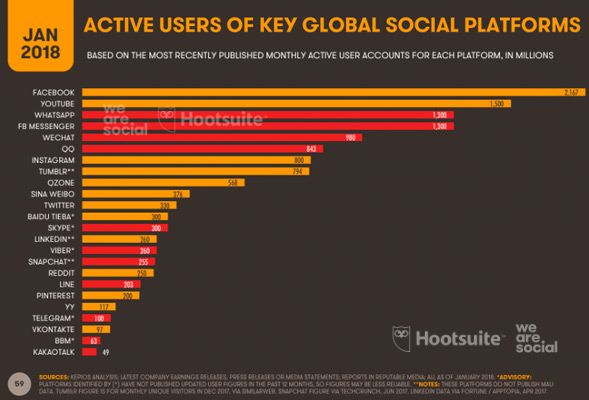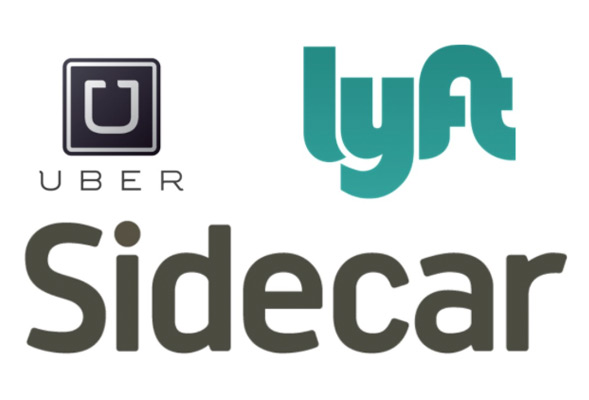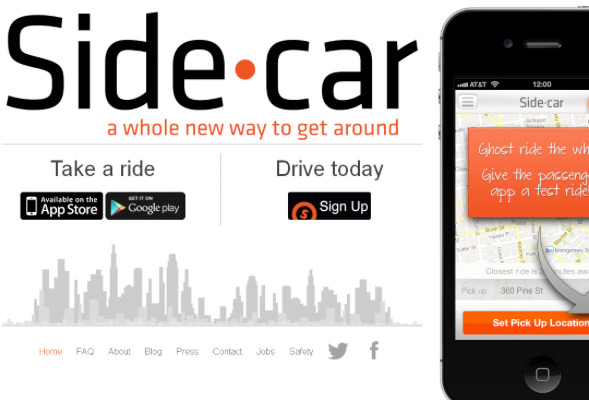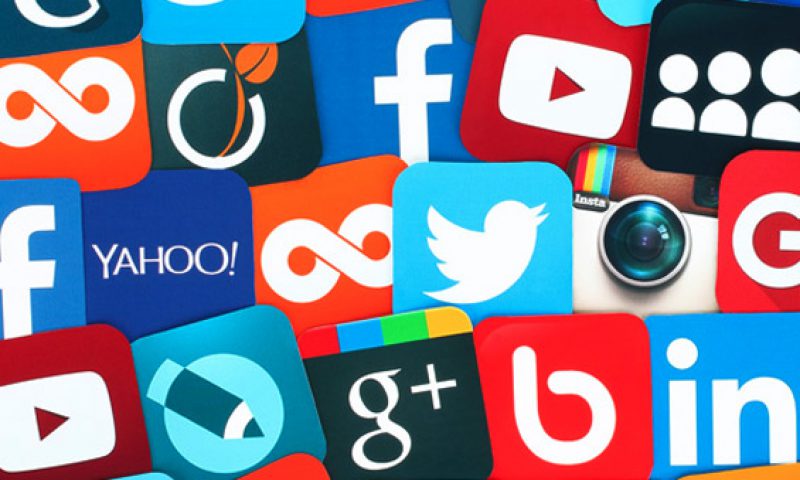
Social Media Predictions 2012
By chance I recently came across an article I wrote in 2012 for a marketing magazine. It was loosely about social media, the value for companies of being active on social networks, privacy and regulation, and what the future outlook held.
2012 does not sound too long ago, but in internet years it’s an eternity.
In 2012 Social Media was really just coming of age. Facebook was by far and away the biggest social network in the US, but at number two was Blogger (the blogging platform owned by Google), and Twitter was number three. Pinterest emerged as one of the breakout stars in social media for 2012, boasting the largest year-over-year increase in both unique audience and time spent of any social network across PC, mobile web and apps.* In the top 10 was Linkedin and Google+, and also Tumblr, Myspace and Wikia.
In early 2018 Facebook was still number one. The additions since 2012 are YouTube at number two and Instagram at seven, as well as a bunch of messaging apps and huge Chinese social networks like WeChat, QQ and QZone. Gone from the list are Blogger, Myspace and Wikia. Surprising to me is that Tumblr is still on the list. WhatsApp (another Facebook purchase) is at number three and lurking with intent just outside the top 10 is Snapchat with Reddit also making an appearance.**
So six years later how do my words hold up?
What needs to be remembered is that it’s not about growing the number of likes or followers for their own sake but about having an ongoing sustainable level of fan activity backed up by a willingness to run promotions and competitions to reconnect with them on a regular basis.
Social media provides a unique opportunity to engage and connect if it’s authentic and true to the brand’s values. There is no denying that effective social media activity is hard work, and needs an ongoing level of daily investment, but if the quality of dialog is rich, varied, and interesting, the payback is that enthusiastic customers can become an extended sales force acting as cheerleaders for the brand.
There can be dangers in exposing a brand to online commentary, but the benefits outweigh the risks. The truth is that brands are being talked about online anyway and whether the discussion is derogatory or not, it’s better to have an input into the discussion rather than sitting on the sidelines.
I would still stand by my sentiments from six years ago. Today we like to think we’ve moved on from running promotions and competitions to drive engagement but the reality is that there is still a place for such activity especially in lower budget FMCG campaigns.
In 2012 there was often still a job to be done to convince clients of the benefits of being active on social media. Today there is less convincing needed, but a lot of available budgets now go directly to Google and Facebook in the form of advertising revenue, rather than being spent on running campaigns and creating assets.
On the subject of Facebook I wrote…
Facebook has restrictive guidelines for running promotions and competitions that are in some ways more proscriptive than traditional limitations set by self regulating bodies like the Advertising Standards Authority. For Internet activity originating from Ireland, legal restrictions apply online as much as they do offline. Of more concern is that Facebook has become the arbiter of a US centric moral code where breast feeding images are banned but severed limbs are acceptable.
At the annual South by Southwest (SXSW) music, and interactive festival held in Austin, Texas every March, lots of fledgling high tech startups vie to be the next Twitter and Foursquare. There’s boundless hype and publicity as each company pitches themselves as the next big thing. But the reality is that few make it and fewer still will grow to be in a position to mount a competitive challenge to the established giants. If they show any signs of doing so, like photo processing App Instagram, they’ll be bought out by a Facebook for a ridiculous billion dollar fee.
That’s not to say that Facebook can’t go the way of Bebo or even Yahoo but if it falters it will likely be due to its own missteps over privacy and security rather than consumer fatigue.
The reality is that Facebook is under pressure both due to privacy concerns and consumer fatigue as well as loss of a coolness factor among younger demographics. Anyone with a pulse will know that Facebook have faced huge privacy issues relating to the collection of personally identifiable information of up to 87 million people by the political consulting and strategic communication firm Cambridge Analytica – so I was right on that count, but consumer fatigue is also playing a part in denting Facebook’s share price. Younger people now spend more time using Snapchat, WhatsApp and YouTube.
Just a couple of days before the 2012 article was written it was announced that Facebook had bought Instagram. Remember that Instagram wasn’t in the top 10 social networks in 2012. Instagram’s strategy for growth helped some would say by stealing Snapchat features is paying off.
The future may come from an area we can’t even imagine yet, but in a few years every phone will be a smart phone, so it’s likely that Apps on mobile and tablet devices will be central to whatever comes next. And where there’s an audience there will be an opportunity for business to engage with consumers.
Back in 2012, smart phone usage among 16-24 year olds was already at 66% in the UK and it’s now at 95% ***, so that wasn’t exactly a Nostradamus level of prophecy.
I did not foretell the rise of the gig economy driven by mobile technology. In 2012 ride hailing company Lyft was just being established. Uber was in existence but was still a high end limousine company. The real mover and shaker was Sidecar also based in San Francisco. They invented ridesharing as we know it but ended up going out of business in 2015. It was Lyft that effectively made it into a marketable product, and Uber that continues to be best known for scandals, blunders and PR disasters.
Nor did I predict the extent the e-commerce would have on bricks and mortar traders which seems to be accelerating the decline of many well known UK retailers. Also I didn’t foresee the success of online streaming in both music and video or the potential of IOT. While AI, Machine Learning, and Blockchain are still buzzwords that haven’t really impacted daily lives who’s to say they won’t have revolutionised our lives in another six years. But I won’t be making any more predictions – I don’t want to be remembered like Robert Metcalfe, founder of 3Com, inventor of Ethernet, who said in 1995
“I predict the Internet will soon go spectacularly supernova and in 1996 catastrophically collapse.”
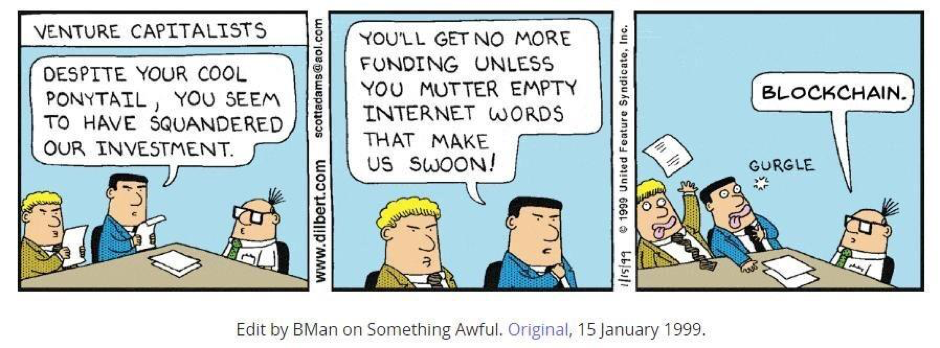
Sources:
* nielsen.com
** wearesocial.com
*** statista.com
David Jordan – Digital Director
David set up the dedicated digital division of Neworld in 1999 and oversees the strategic approach, creative design and technical development of digital projects from websites to moving graphics and on-screen presentations. When not predicting the future or cycling to work, he is likely to be tinkering with computers or watching a cycling race.
Keep Reading
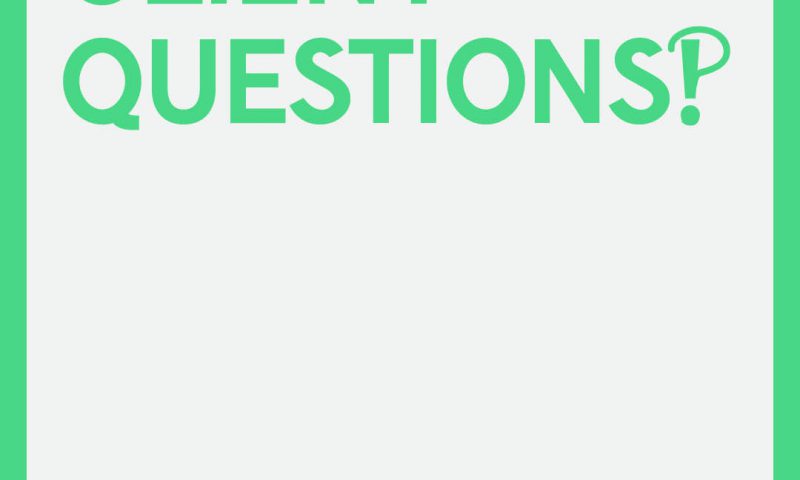
Client Question: What is tone of voice?
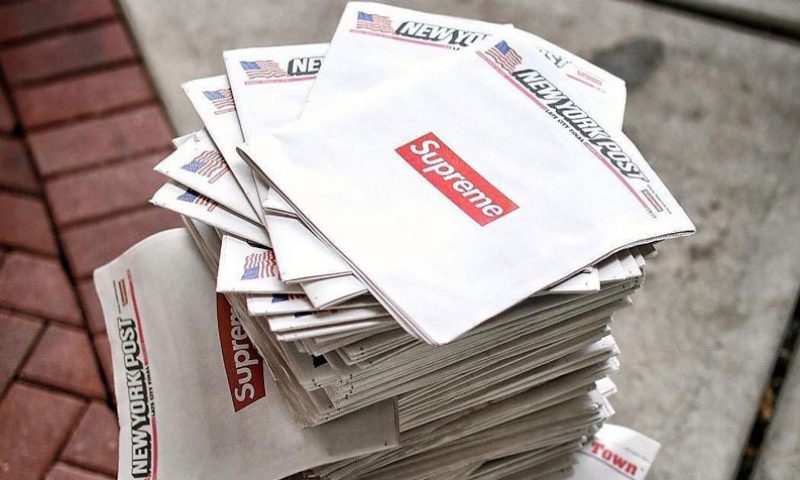
A Love Supreme

5 characteristics of successful businesses
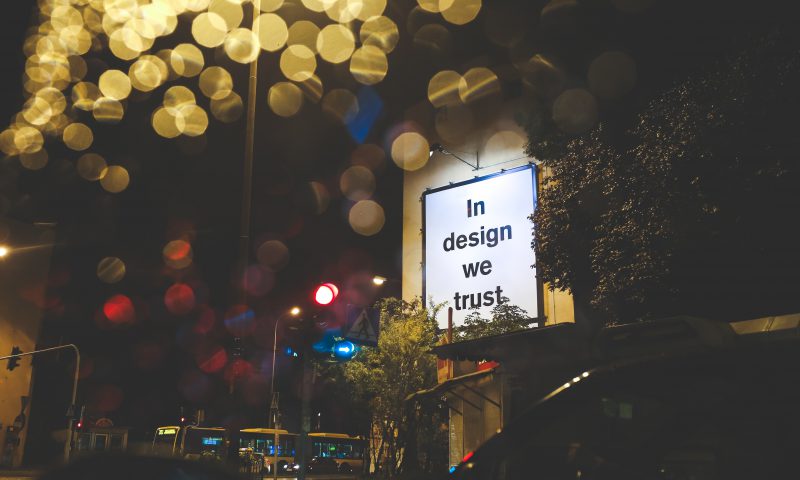
Why become a packaging designer?
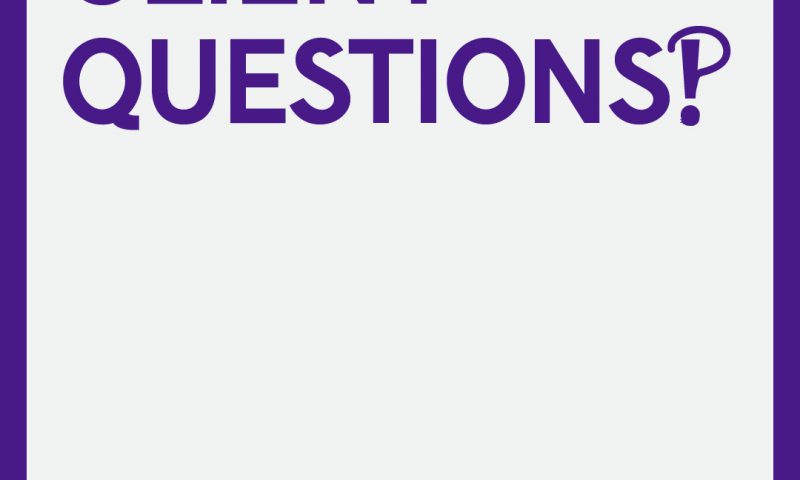
Client Question: Are brand guidelines important?

Branding gets spiritual

Top Five Flicks for Designers

A Creative Journey: Evolution of a Painting

Using the right colour in the right way

How to build your brand’s image through merchandise
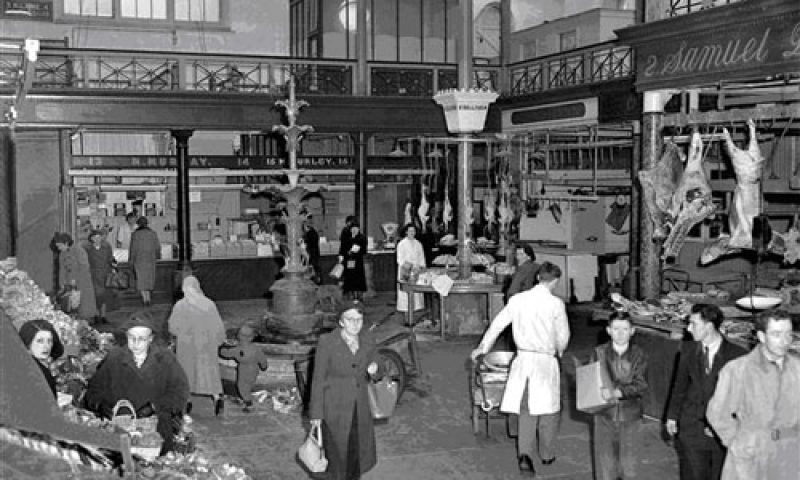
Packaging in Ireland’s Oldest Market
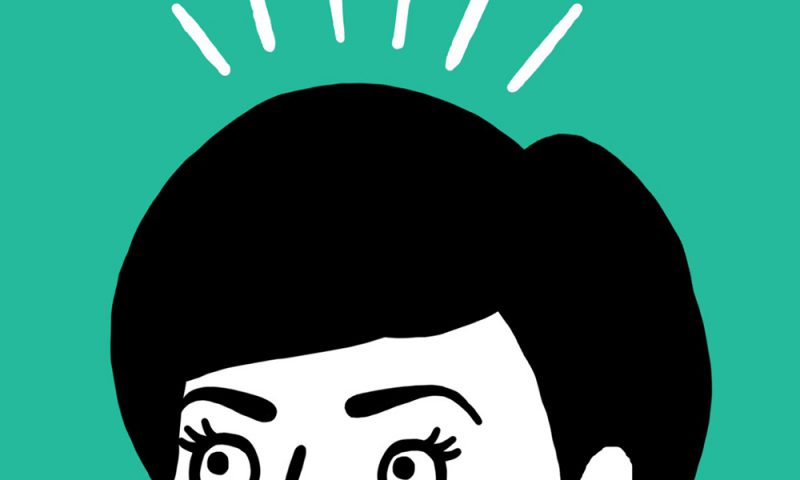
Creative People Are Complex – 10 Contradictory Traits...

Designer OCD

Ireland’s mobile internet habit
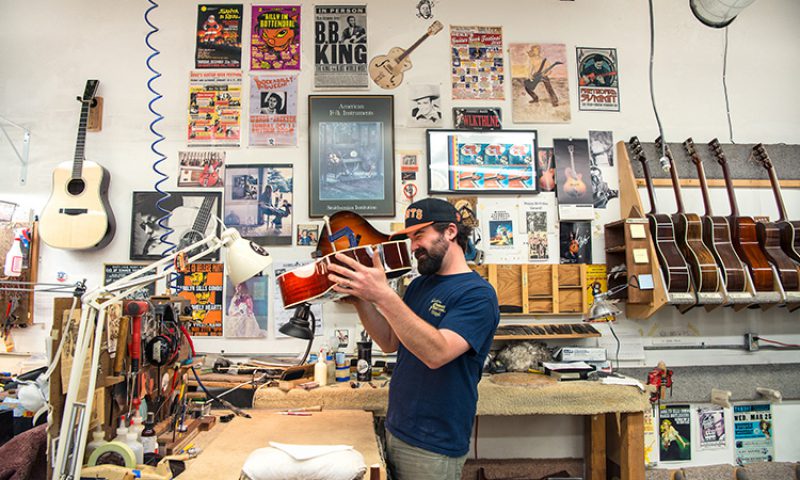
Is Craftsmanship Dead?
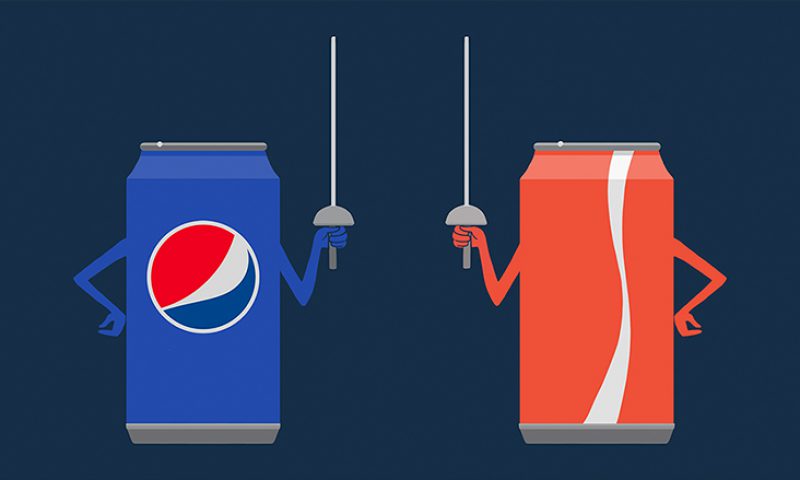
Pepsi vs. Cola: The Marketing Battle of the Century

The Ryder Cup – team branding gives them the edge
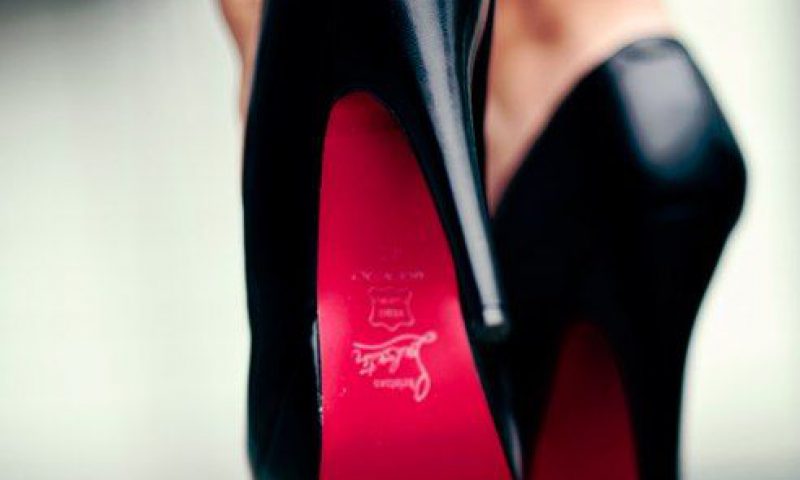
Why Do I Have A Passion for Shoes
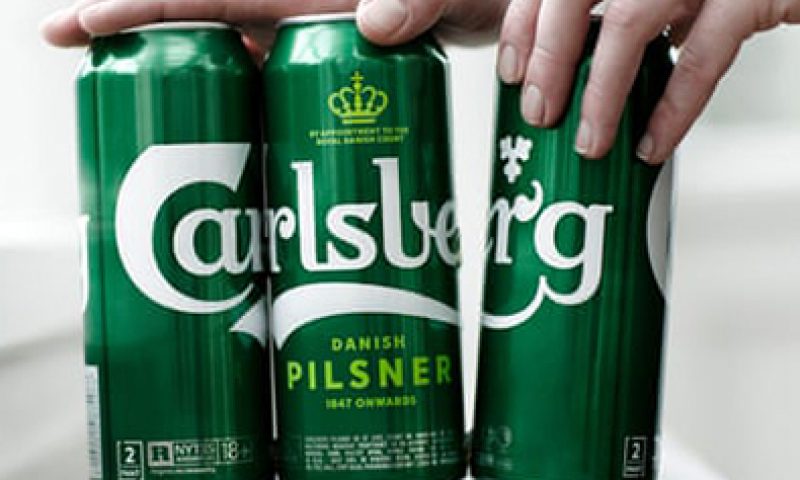
World first for the beer industry: Carlsberg sticks it to...

